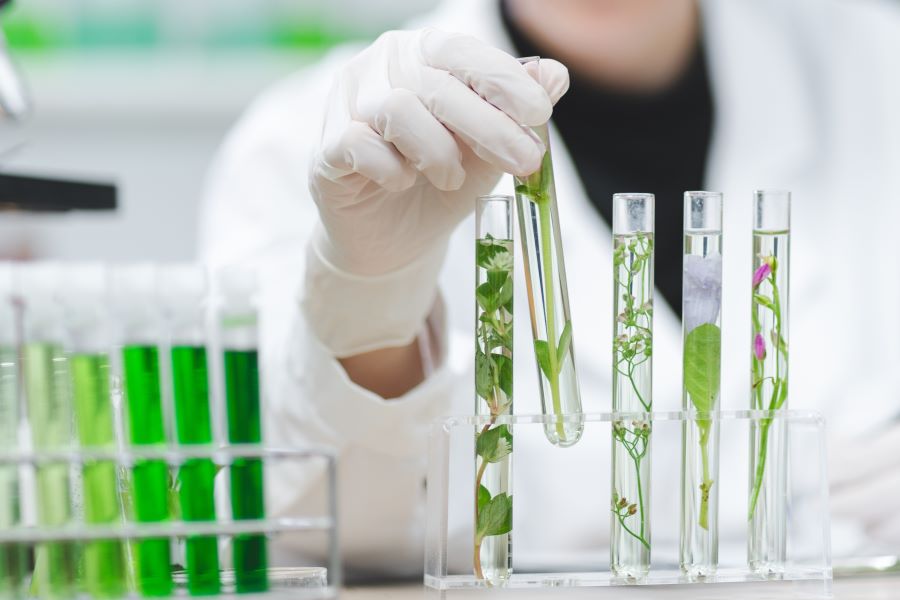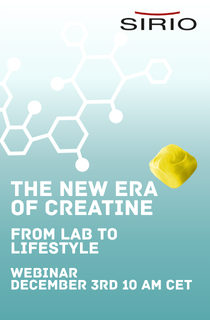Greenvit CEO on botanical efficacy, sustainability, and advances in tech and research
Key takeaways
- Greenvit CEO says the botanical market is shifting toward clinically proven, sustainable extracts.
- Adulteration, quality gaps, and unclear regulations remain key hurdles.
- Advances in omics and AI boost efficacy and traceability in botanicals.
Amid a growing consumer demand for science-backed botanicals, Greenvit has developed standardized botanical extracts for targeted health benefits. We meet with the Polish manufacturer’s CEO to examine product efficacy, sustainability, and quality challenges, and gain insight into how technological developments can help overcome these.
“Looking at the current landscape and future directions, it is clear that the botanical extract market is entering a maturity phase. We are now dealing with ingredients that are scientifically substantiated, technologically advanced, and market-aware,” Rafał Pietruszyński tells Nutrition Insight.
“For companies in this sector, the keys to success lie in investing in research, ensuring transparency, and mastering effective storytelling. The winners in this space will be those who not only deliver efficacy and safety but also know how to communicate the value and story of their products in a way that resonates with today’s informed consumers.”
He highlights that sustainable supply chains, including regenerative agriculture, wild-crafted raw materials, and circular economy models, will play a “pivotal role” in the coming years.
“Another important development will be harmonizing regulatory frameworks, which is becoming increasingly relevant in global e-commerce. We also foresee growing synergies between botanical ingredients and other active compounds, such as adaptogens, postbiotics, and microbiome-modulating substances.”

Effective and validated extracts
Pietruszyńsk expects the botanical extract market to increasingly move toward integrating science, sustainability, and personalization.
 Greenvit observes a shift in consumer expectations toward clinically supported and standardized botanical extracts.“The future belongs to extracts that are not only natural but also clinically validated and truly effective.”
Greenvit observes a shift in consumer expectations toward clinically supported and standardized botanical extracts.“The future belongs to extracts that are not only natural but also clinically validated and truly effective.”
He observes a strong market interest in botanicals for immunity, healthy aging, metabolic, gut, eye, and sleep health. “We anticipate continued development of targeted botanical extracts designed to address specific health needs — particularly in the areas of metabolism, mental health, immune function, and hormonal balance.”
“We also observe a clear shift in consumer expectations toward clinically supported and standardized botanical extracts, rather than generic powdered plant forms,” continues Pietruszyńsk. “Today’s consumers demand effectiveness, transparency, traceability, and compliance with sustainability standards.”
Greenvit offers six branded botanical formulations with standardized compositions, often supported by clinical data. These formulations are based on plant extracts from berries and fruits such as aronia, bilberry, and tart cherry.
Pietruszyńsk highlights that these are popular ingredients. “There is strong demand for elderberry, especially in the context of immune support and oxidative stress. Tart cherry is gaining popularity in post-exercise recovery due to its anti-inflammatory properties.”
“Bilberry is commonly used in supplements for eye health and blue light protection, while hibiscus has emerged as a valued botanical for metabolic balance and appetite control. In sleep and relaxation, lemon balm and valerian root play a significant role.”
The company’s CherryGo fruit extract complex supports muscle recovery and antioxidative activity, and Rescovin is linked to immunoregulatory and antiviral properties.
 Challenges in the botanical industry include quality, transparency, adulteration, variable composition, and supply chain traceability.Aronvit contains the antioxidants anthocyanins and polyphenols, which benefit metabolic health, longevity, and overall well-being. Meanwhile, Fenactive has an immunostimulating effect, Calmomix supports nervous tension and stress relief, and Oculoxin supports eye health.
Challenges in the botanical industry include quality, transparency, adulteration, variable composition, and supply chain traceability.Aronvit contains the antioxidants anthocyanins and polyphenols, which benefit metabolic health, longevity, and overall well-being. Meanwhile, Fenactive has an immunostimulating effect, Calmomix supports nervous tension and stress relief, and Oculoxin supports eye health.
Market challenges
Although Pietruszyńsk says the botanical market is experiencing dynamic growth, he also observes key challenges.
“There is a significant disparity in regulations concerning allowable health claims across different regions, such as the EU, the US, and Asia. This makes it difficult for companies to effectively plan communication strategies and launch products globally.”
“Another major barrier is quality and transparency,” he adds. “The industry still struggles with issues such as adulteration, variability in composition, and insufficient traceability throughout the supply chain.”
Pietruszyńsk highlights that sustainable sourcing is a “critical area of concern,” as overharvesting of botanicals and other natural resources can lead to environmental degradation. Therefore, he believes regenerative agriculture and green extraction technologies are increasingly important.
“Competitive pressure must also be considered — botanical ingredients are now competing with advanced nutraceutical formats that resemble pharmaceuticals, such as peptides and postbiotics.”
Moreover, he cautions that many consumers are still skeptical toward plant-based products, especially if these do not contain clear data on standardization or scientific validation.
Technological advances
According to Pietruszyńsk, technology plays a crucial role “at every stage of the value chain” in the botanical industry.
 Pietruszyńsk says modern research methods and omics technologies have helped build a more profound understanding of botanicals.He says that extraction and standardization processes are continuously modernized, with companies increasingly using supercritical CO₂ extraction, water-based methods, or enzymatic techniques. “These approaches avoid using chemical solvents and enhance the purity, bioavailability, and environmental profile of the raw materials.”
Pietruszyńsk says modern research methods and omics technologies have helped build a more profound understanding of botanicals.He says that extraction and standardization processes are continuously modernized, with companies increasingly using supercritical CO₂ extraction, water-based methods, or enzymatic techniques. “These approaches avoid using chemical solvents and enhance the purity, bioavailability, and environmental profile of the raw materials.”
“Advanced analytical techniques such as high-performance liquid chromatography, nuclear magnetic resonance spectroscopy, and DNA analysis allow for precise identification of extract composition and origin,” adds Pietruszyńsk.
“Meanwhile, modern formulation technologies — including nanoencapsulation and liposomal delivery systems — improve the efficacy of active ingredients.”
He also highlights the potential of using big data and AI, as these enable large-scale data analysis to better match specific plant compounds with targeted health effects and thus support the development of personalized supplements.
Moreover, Pietruszyńsk says modern research methods combined with omics technologies, such as genomics, metabolomics, and microbiomics, have helped build a significantly more profound understanding of botanical ingredients in recent years.
He explains that omics technologies enable the observation of gene expression regulation, changes in metabolite levels, and influence on key physiological processes such as insulin resistance, inflammation, oxidative stress, and aging.
“This type of research is now considered the future of supplement and functional food science — and is gaining recognition not only among regulatory agencies (such as the US FDA and European Food Safety Authority) but also among companies operating in the premium segment.”
In the supply of botanicals, Pietruszyńsk highlights that traceability technologies are gaining importance and help to assess product sustainability. “Tools like blockchain and QR codes allow consumers to verify the origin, carbon footprint, and ethical standards of production.”
“A key example of our commitment to sustainability is the launch of the PureGreenLine processing line at Greenvit’s Łomża facility. This line purifies botanical materials using only water-based extraction, with no chemical solvents, ensuring natural purity. The process operates under a zero-waste system and utilizes solar energy, combining high production efficiency with environmental responsibility.”















